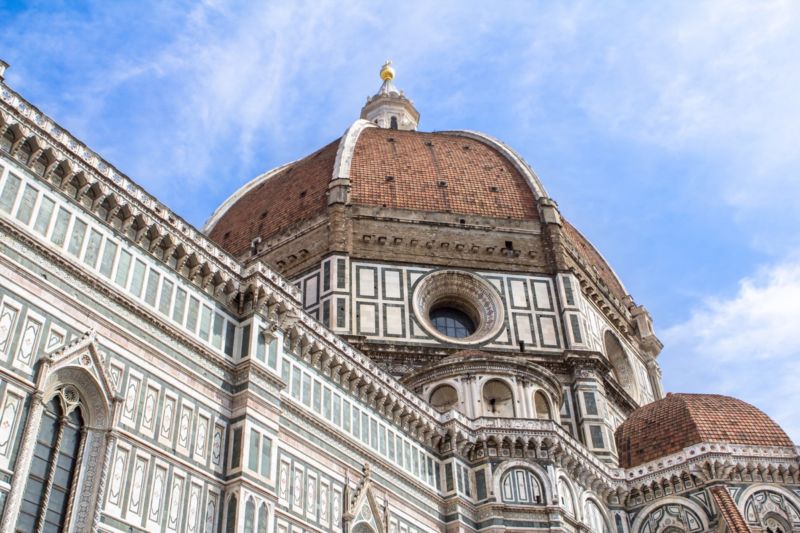Science
Related: About this forumItaly's famous dome is cracking and cosmic rays could help save it Filippo Brunelleschi left no deta
Filippo Brunelleschi left no detailed blueprints for how he built his famous structure.
JENNIFER OUELLETTE - 8/21/2018, 5:49 PM

The soaring dome atop the Cathedral of St. Mary of the Flower justly dominates the Florence skyline and has stood for centuries, ever since Filippo Brunelleschi designed it in the early 15th century. But scholars aren't quite sure how this goldsmith with no formal architectural training managed to construct it. Brunelleschi built a wooden and brick model of his plan, but deliberately left out crucial details and left no comprehensive blueprints so his rivals could not steal his secrets.
Elena Guardincerri, a physicist at Los Alamos National Laboratory who grew up in a nearby town in Italy, thinks she can help resolve part of the mystery with the aid of a subatomic particle called a muon.
Inverted tension
Brunelleschi found inspiration for his design in the inverted catenary shape of the Pantheon, which is an ideal shape for domes because the innate physical forces can support the structure with no need for buttressing. Robert Hooke phrased it best in the 17th century: "As hangs the flexible chain, so but inverted stands the rigid arch." A chain suspended between two points will naturally come to rest in a state of pure tension; inverting that catenary shape into an arch reverses it into a shape of pure compression. Standard building materials like masonry and concrete would break fairly easily under tension, but they can withstand large compressive forces.
The Pantheon's circular dome has a single concrete shell. Brunelleschi's design called for an octagonal dome spanning 150 feet and soaring nearly 300 feet in height with no flying buttresses for support. He used two shells: a very thick inner shell and a much thinner outer shell. Historians believe he used three pairs of large stone chains (which are still part of the structure) to act a bit like barrel hoops, applying sufficient pressure to hold the bricks in place while the mortar set.
More:
https://arstechnica.com/science/2018/08/cosmic-rays-could-help-unlock-the-secrets-of-brunelleschis-dome/
CaliforniaPeggy
(149,627 posts)ROB-ROX
(767 posts)The materials used are layers of different materials which effect the radiation passing through the material. Each material has a different resistance to radiation or stopping the radiation from passing through the material. This value will provide information regarding the material utilized to construct the dome...........Simple health physics...
CaptainTruth
(6,592 posts)The small dome found under the floor looked like a scale model proof-of-concept of the construction technique used for the large dome.
gopiscrap
(23,761 posts)CTyankee
(63,912 posts)to do it, he simply took the egg and cracked it, thereby setting it on its end.
Lionel Mandrake
(4,076 posts)"As hangs the flexible chain, so but inverted stands the rigid arch." That's true for an arch, but not a dome, of constant thickness. The ideal shape of such a dome is a math problem. The problem can be solved by calculus, which was invented by Hooke's contemporaries Newton and Leibniz, but Hooke never learned calculus.
Architects had to experiment with small domes to find shapes that worked well enough in practice. The ancient Romans did so and were the first to build large masonry domes that stood for centuries, as epitomized by the Pantheon in Rome.
Lionel Mandrake
(4,076 posts)Primary cosmic rays are nuclei. They interact with the earth's atmosphere to produce pions, which decay into muons. It's the muons which we see at sea level. A muon is like an electron, except that it weighs about 200 times as much. Like an electron, a muon doesn't feel the "strong" nuclear force. This accounts for its penetrating power. Muons are useful in searches for hidden chambers in large objects, like the pyramids. But muons are a nuisance to physicists searching for other particles, e.g., neutrinos.